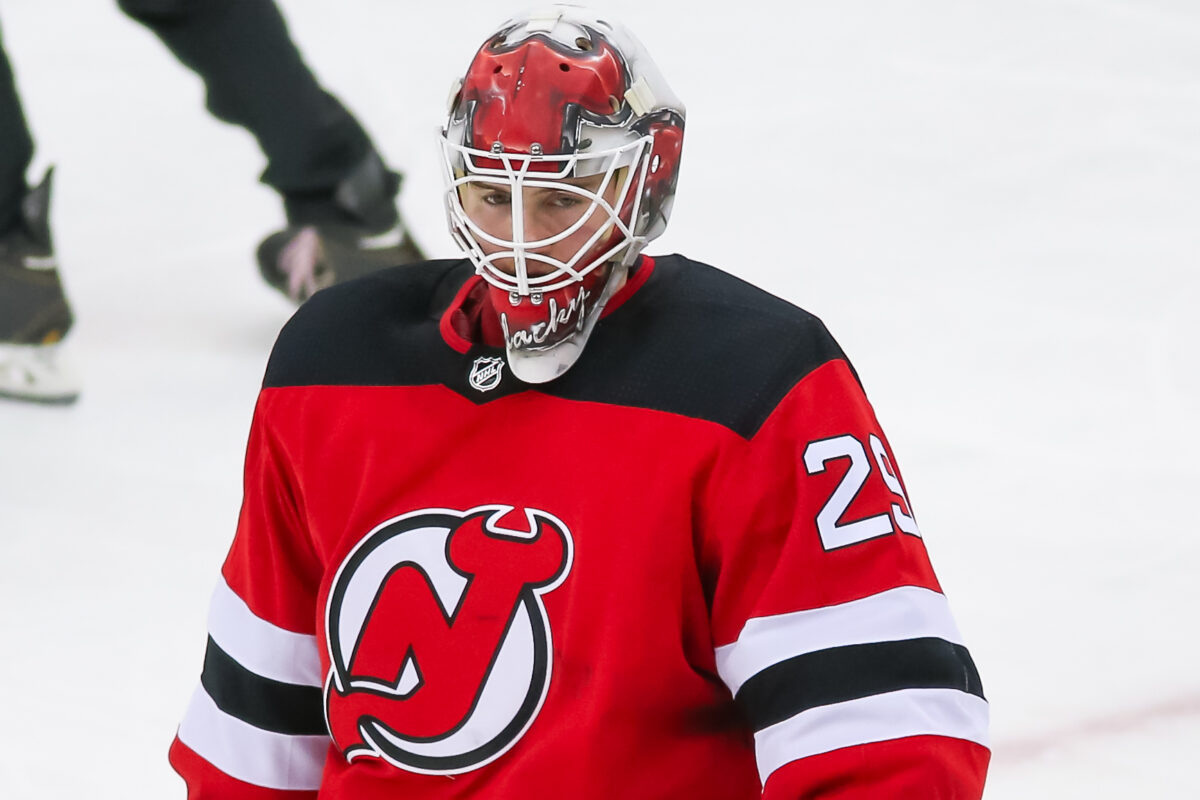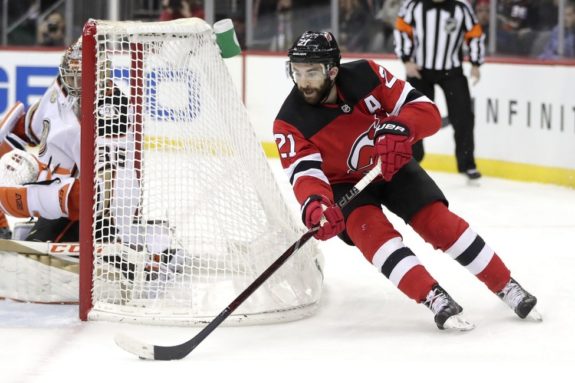There are a lot of ways to describe the 2020-21 NHL season. Weird is certainly one of them. And for the New Jersey Devils, nothing is weirder than what’s going on between their home and road games.
After Tuesday’s 3-0 loss to the New York Rangers, the Devils dropped to 4-16-3 at the Prudential Center, an unfathomably poor record at home. Meanwhile, they hold a 10-5-3 record on the road and have looked like a different team.
So what’s happening here?
Well, it’s a bit complicated, and there are a lot of variables as to why they look like one of the worst teams in the league at home but a perennial playoff contender on the road. Let’s take a look at their home and road splits and try to figure out what’s going on.
Deep Dive Into Devils’ Home & Road Stats
Let’s start with the Devils and their play at home because that’s of the most concern. They haven’t played their best at home and have had miscues that have doomed them in some games. But in reality, they haven’t actually played all that poorly.
At five-on-five, the Devils are averaging close to 55 shot attempts per 60 minutes and are giving up 46 shot attempts per 60, the latter of which is the fourth-best mark in the NHL. When it comes to expected goals, they’re averaging 2.28 per 60 and allowing 2.15 per 60, middle-of-the-pack rates in the league.
Based on those numbers, the Devils should be winning much more on home ice. But what’s killing them is their inability to put the puck in the net and make saves, which is kind of important. Their home save percentage (SV%) at all strengths is .877, the worst in the league. Meanwhile, their shooting percentage (SH%) of 7 percent is second-lowest to only the Anaheim Ducks. Adjust those to five-on-five, and they’re second-worst and fourth-lowest, so it’s not much better.

Meanwhile, on the road, almost the exact opposite is happening. Their SV% of .916 at all strengths is fifth-best in the league, and they’re shooting 10.1 percent, which is the 11th-highest mark. It’s pretty much the same thing at five-on-five, too; their SH% of 8.6 percent is 10th-highest, while their SV% of .931 is fourth-best.
But here’s where things get interesting. The Devils’ five-on-five numbers on the road aren’t better than at home, at least defensively. They’re averaging 56.7 shot attempts against per 60 and 2.35 expected goals against per 60. So not only are they giving up more shot attempts on the road, but they’re giving up higher quality ones too.
Offensively, they’re generating more five-on-five shot attempts (56.3 per 60) on the road, as well as higher quality ones (2.40 xG per 60). They’re converting on those shots, whether it’s at five-on-five or all strengths. But for whatever reason, they’re getting almost all the saves on the road, even though they allow more volume and quality. And for whatever reason, they cannot get a timely save at home, even though they’re allowing fewer shots in volume and quality.
Related: Devils’ Deadline Day Comes and Goes Quietly
It’s not like they play different styles on the road and at home. And this is where things get a bit complicated.
Weird Things Happen in a Weird Season
Because of the COVID-19 pandemic, this will be the most unconventional season the NHL has ever had. Teams are playing only 56 games and are staying within their divisions to avoid cross-country travel while the pandemic still rages on.
There’s a lot of variance and randomness in hockey in an 82-game season as is. Cut the schedule down to 56 games and have teams play with little or no fans in attendance, and that variance and randomness get amplified even more.
That makes trying to explain the swings in Devils’ home and road games that much more difficult. They don’t have a ton of shooting talent, especially after trading Kyle Palmieri to the New York Islanders, but they’ve been able to score on the road until this point. Maybe that will start to regress post-trade deadline without Palmieri, but that remains to be seen.
In most seasons, they’d be due for some positive regression at home. They have an xG of 57 but only have 47 actual goals to show for their efforts. Likewise, they’d be bound to get some saves at home. They have an expected goals against of 62.5 but have given up 78 goals, so their goaltenders have given up almost 16 goals more than expected at home. The discrepancy at five-on-five is near similar, too; they’ve scored 7 goals less than expected and have given up 12 goals more than expected.

But the quirk here is the Devils don’t have many home games left. Ten of their final 15 games will come on the road, starting tonight against the Rangers. What happens next will be interesting. Can they maintain their goaltending on the road? Mackenzie Blackwood isn’t going anywhere, and he has a .925 SV% at away rinks, so it’s possible.
Will the Devils still find the back of the net on the road without Palmieri? He had six away goals before the team traded him. But Miles Wood has scored half his goals (7) on the road, while Pavel Zacha (5), Jack Hughes (5), Janne Kuokkanen (4), Yegor Sharangovich (4) and Jesper Bratt (3) have all scored in bunches away from Newark. That’s the team’s entire top six now, so that could keep up too.
Related: Devils: Analyzing Coach Ruff’s Performance so Far
The truth is there’s not a logical explanation for the differences at home and on the road. The lack of pure scorers could explain the shooting struggles at home, but it hasn’t been a problem away from there, at least not yet.
My main takeaway is the Devils are getting a bit lucky on the road and incredibly unlucky at home. Over time, those things even themselves out. But with the season almost over, that randomness could stick around for the final few weeks. Fortunately, the plan for the 2021-22 season is to get back to a regular schedule. Hopefully, by that time, the team’s home and road differences are something to look back on and say, “well, that was odd.” And perhaps that’s just the way it’s supposed to be in what will go down as an odd NHL season.
* * *
Advanced stats from Natural Stat Trick